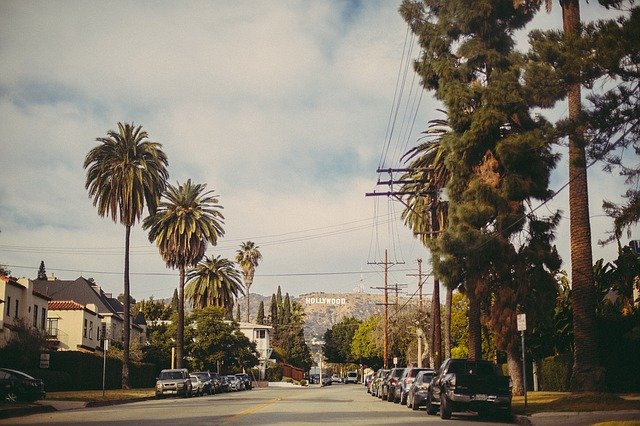
The US is in the midst of an historic public health crisis, with more reported Covid-19 cases over a three-month period than reported polio cases between 1910 and 2010 combined. In contrast to many other countries, the authority to combat public health threats in the US rests not with the Federal government, but largely with state and local officials. The primary policy strategy to prevent the spread of coronavirus to-date is the enactment of shelter-in-place orders (SIPOs). An important rationale for this policy is not simply to curb the pandemic’s growth, but also to delay its peak, allowing additional time to meet the surge in demand for ventilators, hospital beds, and medical staff to treat Covid-19 patients.
On March 19, 2020, California Governor Gavin Newsom issued the nation’s first statewide SIPO, requiring residents to remain in their homes for all but essential activities such as purchasing food or medicine, caring for others, exercise, or traveling for employment deemed essential (Executive Order N-33-20 2020). While grocery stores, pharmacies, restaurants providing takeout or delivery services, and other essential businesses were permitted to remain open, most other non-essential businesses were ordered closed. Violations of the SIPO were subject to a $1,000 fine and up to six months of imprisonment, though enforcement most often occurred through social pressure and warnings for first offenses.
In a new working paper, Andrew Friedson, Drew McNichols, Dhaval Dave, and I present the first evidence on the public health effects of a statewide SIPO during the crucial early weeks of the policy’s enactment. First, using daily state-level data and a synthetic control research design, we find that California’s statewide SIPO increased social distancing and raised the percentage of individuals staying at home throughout the day. Then, in our main analyses, we explore the coronavirus-related health effects of the order, and estimate that California’s SIPO reduced the number of Covid-19 cases by up to 87,000 and deaths by about 1,500 during the first four weeks following its enactment. However, our back-of-the-envelope calculations suggest that California’s SIPO generated 6 to 14 job losses per coronavirus case averted and about 400 job losses per life saved. This tradeoff will be at the heart of policymakers’ future decisions about when to lift SIPOs and the degree to which social distancing will be relaxed.
There are several dimensions in which future work will be important. First, in the absence of a vaccine or effective treatment for Covid-19 in the short term, the chief public health rationale for temporary shutdown orders is to reduce serious Covid-19-related illnesses and deaths due to short-term medical capacity constraints. If some of the deaths or illnesses are postponed to the future when the SIPO is lifted, the intervention’s net health benefits will be smaller. Second, California was uniquely positioned to reap important short-term health benefits from its SIPO given the state’s high urbanicity rate and the enactment of the SIPO during a period of very low Covid-19 case growth. California announced its shutdown order before the pandemic intensified, as was seen in other high-population density US states and Western European nations. Other jurisdictions with less crowding, less medical preparedness, or higher rates of pre-SIPO Covid-19 case growth may have very different experiences.
© Andrew Friedson, Drew McNichols, Joseph J. Sabia, and Dhaval Dave
Andrew Friedson is Assistant Professor of Health Systems Management and Policy at Colorado School of Public Health and Assistant Professor of Economics at the University of Colorado Denver, USA
Drew McNichols is a Postdoctoral Research Fellow at the University of California San Diego, and the Center for Health Economics & Policy Studies (CHEPS) at San Diego State University, USA
Joseph J. Sabia is Professor of Economics and Director of the Center for Health Economics & Policy Studies (CHEPS) at San Diego State University, USA
Dhaval Dave is Stanton Research Professor of Economics at Bentley University, USA
Read more on the coronavirus crisis:
"Coronavirus and the labor market," by Daniel S. Hamermesh
"Fighting a coronavirus recession," by Daniel S. Hamermesh
"Pandemics and the labor market—Then and now," by Karen Clay
"Pricing the lives saved by coronavirus policies," by W. Kip Viscusi
"Health effects of the coronavirus recession," by Christopher J. Ruhm
"The long-term consequences of missing a term of school," by Simon Burgess and Hans Sievertsen
"Coronavirus, telecommuting, and the labor market," by Nikos Askitas
"Expectations about Covid-19 social-distancing measures in Italy and their impact on compliance," by Guglielmo Briscese, Nicola Lacetera, Mario Macis, and Mirco Tonin
"The coronavirus crisis and the next generation," by Bart Cockx
"Korea: A paragon of dealing with coronavirus," by Sok Chul Hong
"Economic implications of postponing the Tokyo 2020 Olympic Games," by Peter J. Sloane
"The sudden growth of employee autonomy during the coronavirus lockdown," by Elisa Gerten and Michael Beckmann
"Mitigating the work–safety trade-off," by Tito Boeri, Alessandro Caiumi, Marco Paccagnella
"Trading off lives for jobs," by Daniel S. Hamermesh
"Trends in Covid-19 infection: What New York City neighborhoods tell us," by George J. Borjas
"Labor markets during the Covid-19 crisis: A preliminary view," by Olivier Coibion, Yuriy Gorodnichenko, Michael Weber
Please note:
We recognize that IZA World of Labor articles may prompt discussion and possibly controversy. Opinion pieces, such as the one above, capture ideas and debates concisely, and anchor them with real-world examples. Opinions stated here do not necessarily reflect those of the IZA.